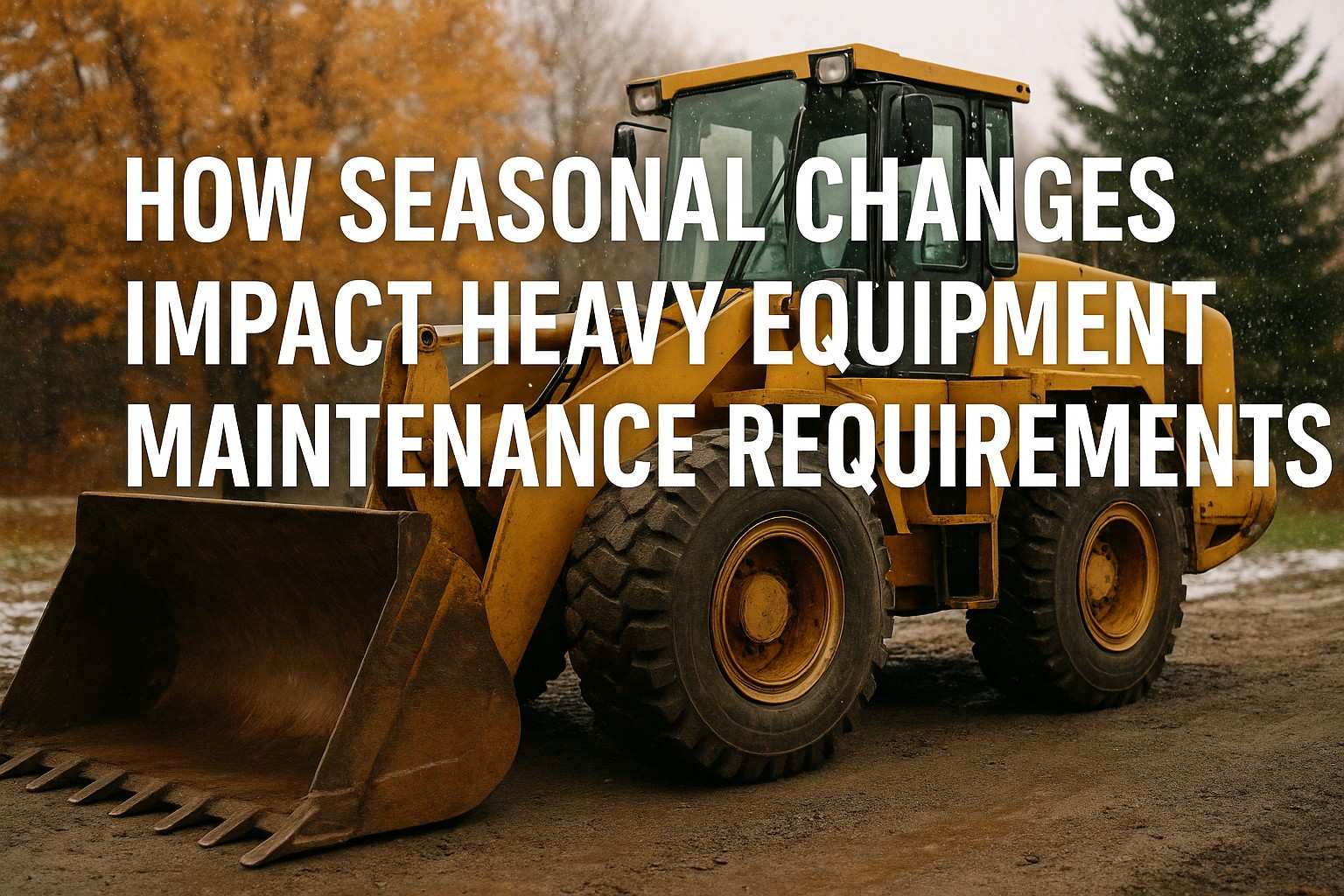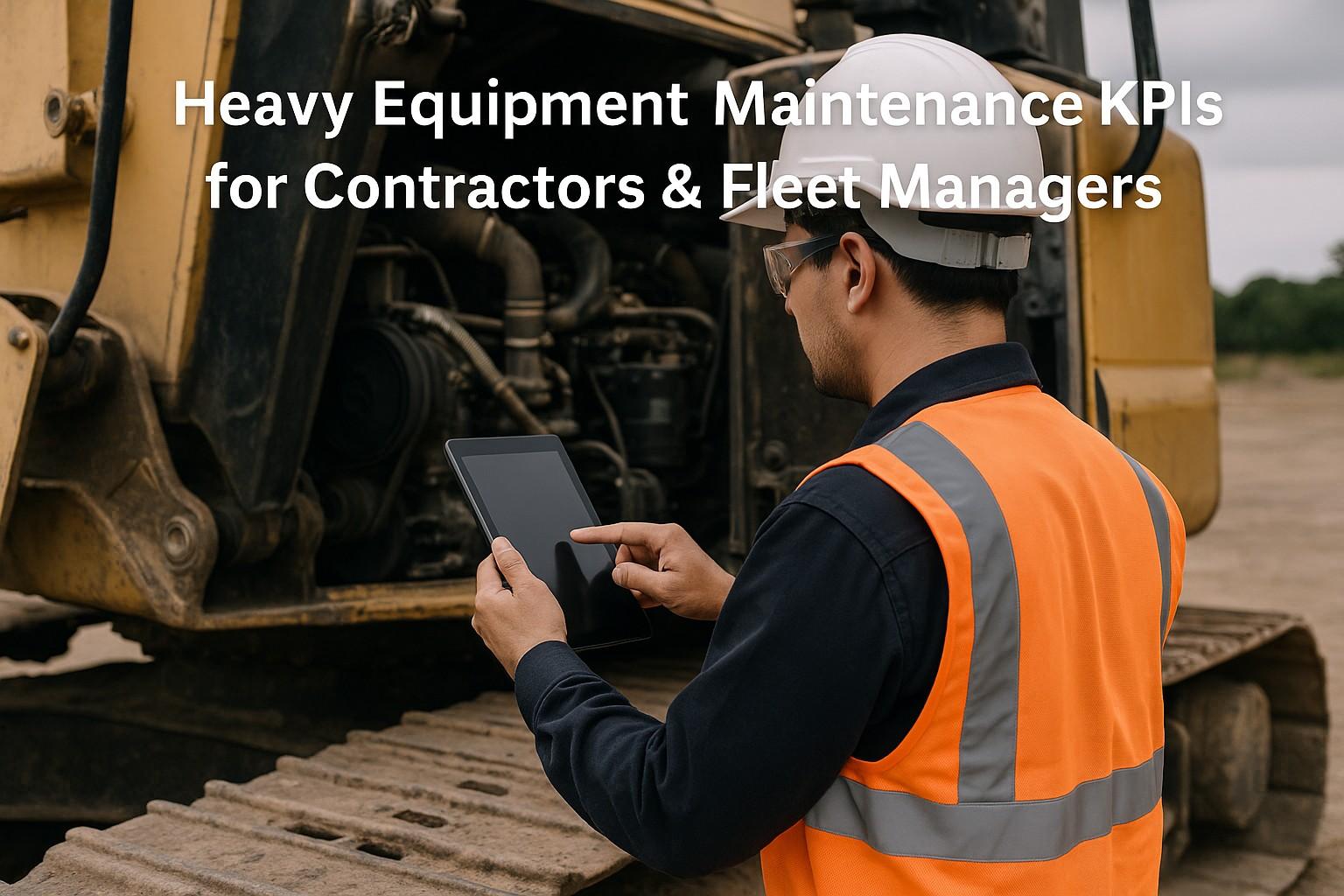In the fast-paced world of construction, time is money. Downtime in construction machinery can lead to significant delays, increased costs, and reduced productivity. According to a study by the National Institute of Standards and Technology (NIST), equipment downtime can cost construction companies up to 3% of their annual revenue. To ensure project success and maintain a competitive edge, it is essential to minimize downtime and maximize productivity in construction machinery. In this blog post, we will explore seven tips to help you achieve these goals and optimize your construction operations. iOS| Android
Tip 1: Implement a Regular Maintenance Schedule
One of the most effective ways to minimize downtime in construction machinery is to implement a regular maintenance schedule. Preventive maintenance helps identify and address potential issues before they escalate into major problems, reducing the risk of unexpected breakdowns and costly repairs.
Why is regular maintenance important?
According to a report by the Construction Equipment Association (CEA), proper maintenance can extend the life of construction machinery by up to 30%. It also ensures that equipment operates at peak performance, improving fuel efficiency and reducing emissions.
How to conduct regular maintenance:
- Create a comprehensive maintenance checklist for each piece of equipment
- Follow the manufacturer's recommended maintenance intervals
- Train operators to perform daily inspections and report any issues promptly
- Use high-quality lubricants, filters, and other consumables
- Keep accurate records of maintenance activities for future reference
Tools to use:
- Computerized Maintenance Management System (CMMS) software to streamline maintenance scheduling and tracking
- Predictive maintenance technologies, such as vibration analysis and oil analysis, to detect potential issues early
Tip 2: Invest in Operator Training
Skilled operators play a crucial role in minimizing downtime and maximizing productivity in construction machinery. Proper training ensures that operators handle equipment safely, efficiently, and in accordance with best practices.
Why is operator training essential?
According to the Occupational Safety and Health Administration (OSHA), operator error accounts for up to 80% of construction equipment accidents. Trained operators not only reduce the risk of accidents and injuries but also optimize equipment performance and fuel efficiency.
How to conduct operator training:
- Provide comprehensive training on equipment operation, safety protocols, and maintenance procedures
- Utilize a combination of classroom instruction, hands-on training, and simulation-based learning
- Regularly assess operator skills and provide ongoing training to address any gaps
- Encourage operators to provide feedback and share their experiences to continuously improve training programs
Features to look for in training programs:
- Customizable training modules tailored to specific equipment types and skill levels
- Interactive and engaging content, such as videos, quizzes, and case studies
- Certification programs to validate operator competency and compliance with industry standards
Tip 3: Leverage Technology for Remote Monitoring and Diagnostics
Advancements in technology have revolutionized the way construction companies monitor and maintain their machinery. Remote monitoring and diagnostic tools provide real-time insights into equipment performance, enabling proactive maintenance and minimizing downtime.
Why use remote monitoring and diagnostics? According to a study by McKinsey & Company, the adoption of remote monitoring and predictive maintenance can reduce equipment downtime by up to 50% and extend the life of machinery by up to 40%.
Tools to use:
- Telematics systems that transmit real-time data on equipment location, performance, and health
- Predictive maintenance software that analyzes data to identify potential issues and optimize maintenance schedules
- Augmented reality (AR) and virtual reality (VR) tools for remote troubleshooting and guided repairs
How to overcome implementation challenges:
- Ensure compatibility between monitoring systems and existing equipment
- Invest in robust cybersecurity measures to protect sensitive data
- Provide training to personnel on how to effectively utilize monitoring and diagnostic tools
Tip 4: Plan for Contingencies and Minimize Idle Time
Construction projects are inherently unpredictable, with weather conditions, supply chain disruptions, and other factors often leading to delays and idle time. To minimize the impact of these challenges, it is essential to plan for contingencies and optimize machinery usage.
Why plan for contingencies? According to a report by the Construction Industry Institute (CII), effective contingency planning can reduce project delays by up to 50% and improve overall project performance by up to 30%.
How to plan for contingencies:
- Identify potential risks and develop contingency plans for each scenario
- Allocate resources and budget for unexpected events or delays
- Establish clear communication channels and protocols for rapid response to emerging issues
- Foster a culture of adaptability and resilience among project teams
Tools to minimize idle time:
- Equipment tracking and utilization software to monitor and optimize machinery usage
- Just-in-time (JIT) delivery systems to ensure timely availability of materials and supplies
- Collaborative planning and scheduling tools to coordinate activities and minimize conflicts
Tip 5: Optimize Machinery Usage and Reduce Wear and Tear
Maximizing productivity in construction machinery requires optimizing equipment usage and reducing wear and tear. By selecting the right equipment for each task, operating machinery within its design limits, and implementing best practices for equipment handling, construction companies can extend the life of their machinery and minimize downtime.
Why optimize machinery usage? According to a study by the Association of Equipment Manufacturers (AEM), proper equipment selection and utilization can increase productivity by up to 25% and reduce operating costs by up to 15%.
How to optimize machinery usage:
- Match equipment specifications to task requirements to ensure optimal performance
- Train operators to use equipment efficiently and avoid overloading or misuse
- Implement site layout and logistics plans to minimize equipment travel distances and idle time
- Utilize equipment attachments and accessories to expand versatility and reduce the need for multiple machines
Tools to reduce wear and tear:
- Predictive maintenance technologies to identify and address potential issues before they cause damage
- Automatic lubrication systems to ensure consistent and optimal lubrication of critical components
- Wear-resistant materials and coatings to extend the life of high-wear components
Tip 6: Monitor Performance and Make Data-Driven Decisions
Effective performance monitoring is essential for identifying opportunities to minimize downtime and maximize productivity in construction machinery. By collecting and analyzing data on equipment performance, fuel consumption, and maintenance activities, construction companies can make informed decisions to optimize their operations.
Why monitor performance? According to a report by Deloitte, data-driven decision-making can improve construction project margins by up to 5% and reduce project delays by up to 30%.
How to monitor performance:
- Implement telematics systems to collect real-time data on equipment location, performance, and health
- Utilize business intelligence (BI) tools to analyze data and generate actionable insights
- Establish key performance indicators (KPIs) to track progress and identify areas for improvement
- Regularly review performance data with project teams to identify trends and best practices
Tools to use:
- Telematics systems that integrate with equipment control systems and provide real-time data
- Cloud-based data analytics platforms that enable seamless data sharing and collaboration
- Customizable dashboards and reporting tools to visualize performance data and track KPIs
Tip 7: Invest in Quality Parts and Components
Investing in quality parts and components is crucial for minimizing downtime and maximizing productivity in construction machinery. High-quality parts are more reliable, durable, and efficient, reducing the risk of unexpected breakdowns and extending the life of the equipment.
Why invest in quality parts? According to a study by the Association of Equipment Management Professionals (AEMP), using high-quality parts can reduce maintenance costs by up to 30% and increase equipment availability by up to 20%.
How to select quality parts:
- Choose parts from reputable manufacturers with a proven track record of quality and reliability
- Ensure that parts meet or exceed original equipment manufacturer (OEM) specifications
- Consider the total cost of ownership (TCO) when selecting parts, including factors such as durability, efficiency, and maintenance requirements
- Establish relationships with trusted suppliers to ensure consistent quality and availability of parts
Tools to manage parts inventory:
- Inventory management software to track parts usage, optimize stock levels, and automate reordering
- Barcoding and RFID systems to improve parts tracking and reduce the risk of stockouts or obsolescence
- Vendor-managed inventory (VMI) programs to outsource parts management and ensure optimal availability
Conclusion
Minimizing downtime and maximizing productivity in construction machinery is vital for efficiency and profitability. Implementing regular maintenance, operator training, and leveraging technology ensures peak performance and extends equipment life. Advanced technologies like telematics and predictive maintenance further optimize operations.
Unlock the full potential of your construction machinery with cutting-edge technology and best practices.
Sign up for free trial
Top 5 FAQs:
1. What are the most common causes of downtime in construction machinery?
Answer: The most common causes of downtime in construction machinery include inadequate maintenance, operator error, equipment overloading or misuse, and unexpected breakdowns due to wear and tear or component failure.
2. How can telematics help minimize downtime and maximize productivity?
Answer: Telematics systems provide real-time data on equipment location, performance, and health, enabling proactive maintenance, remote diagnostics, and data-driven decision-making. By identifying potential issues early and optimizing maintenance schedules, telematics can significantly reduce downtime and improve productivity.
3. What are the benefits of operator training in construction machinery management?
Answer: Operator training ensures that equipment is handled safely, efficiently, and in accordance with best practices. Trained operators reduce the risk of accidents and injuries, optimize equipment performance and fuel efficiency, and extend the life of the machinery.
4. How can construction companies plan for contingencies to minimize the impact of delays and idle time?
Answer: Construction companies can plan for contingencies by identifying potential risks, developing mitigation strategies, allocating resources and budget for unexpected events, and establishing clear communication protocols. Effective contingency planning can reduce project delays and improve overall project performance.
5. Why is it important to invest in quality parts and components for construction machinery?
Answer: Investing in quality parts and components is crucial for minimizing downtime and maximizing productivity. High-quality parts are more reliable, durable, and efficient, reducing the risk of unexpected breakdowns and extending the life of the equipment. Using quality parts can also reduce maintenance costs and increase equipment availability.





